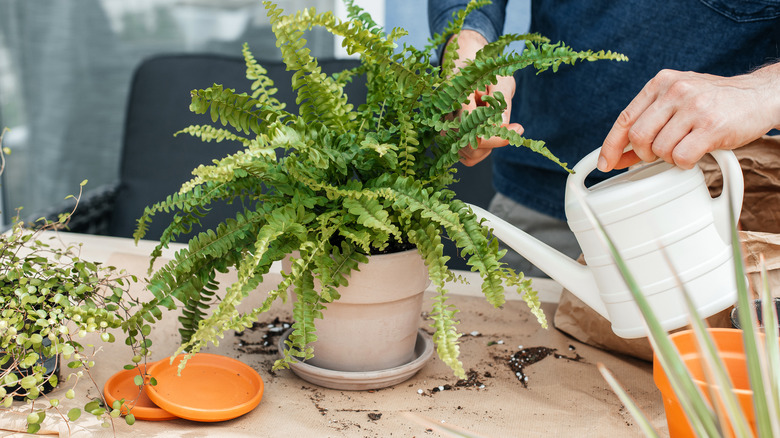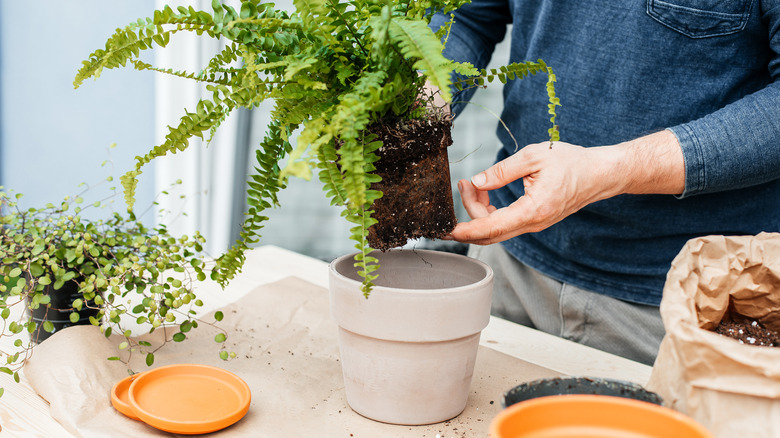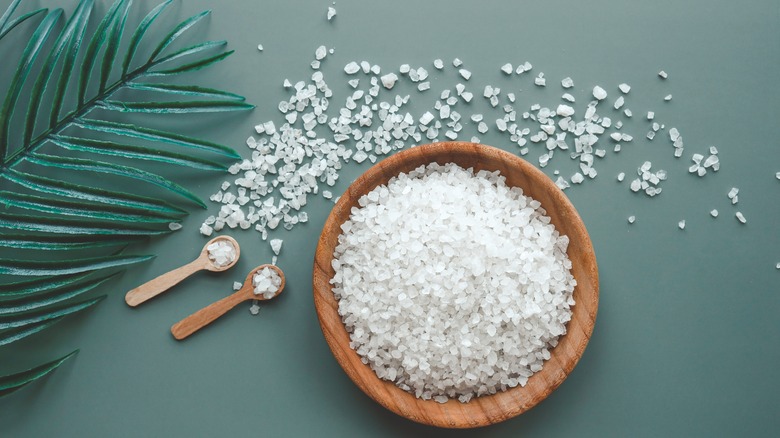The Best Method For Watering Ferns
Ferns are not the most demanding plants in the world, but they do need a little extra TLC when it comes to watering. Finding the perfect balance between keeping them watered and not overdoing it may seem challenging, but don't worry — we've got you covered! Whether you intend to start a beautiful fern collection or want to keep your current ones thriving, here is the best method for watering ferns.
To start, it is better to water ferns in the early morning hours. Does that mean you must be an early riser to own a fern? Technically speaking, no — but the cooler air and lower temperatures in the morning allow the water to absorb deep into the soil and hydrate the plant's roots. Plus, it provides enough time for the soil to dry out slightly before the sun goes down. So rise and shine, and channel your inner green thumb with a morning watering regimen for your ferns.
Keep fern plant soil moist, not soggy
Before you grab a watering can, too much water can be just as damaging to its shallow root system. The best way to know if yours needs water is to check the soil. Ferns are happiest when they are in consistently moist yet not waterlogged soil. If it is dry to the touch, it is time to give the fern a drink. Additionally, checking the weight of the pot can be another good indicator, as heavier pots can mean it is saturated. Be sure to plant the fern in a container with a drainage hole at its base and fill it loosely with loamy soil.
Watering a fern is not an exact science; it is more about what you see. Never let the soil become bone-dry, but that doesn't mean going overboard. If the fronds become flaccid or yellow, it signifies too much liquid love. Additionally, if moss appears on the soil, it is time to reduce the amount of water you give the fern."Ferns will grow where other plants fail to thrive, and most do well in rich, well-drained soil with an abundance of organic matter," says Susan Patterson, master gardener. Ferns can thrive in rich, full of good soil that remains moist. Not sure about the quality of your soil? Performing DIY tests at home can help you better understand your soil's health and if any changes are necessary for your ferns to flourish.
Add Epsom salt to fern plants for an added boost
Even when using the best approach for watering ferns, some plants still need an extra boost. If your fern appears dull rather than bright and vibrant, add Epsom salt to your plant watering routine. Yup — gone are the days when this household staple only soothes sore muscles! Simply add 1 tablespoon of Epsom salt in 1 cup of water once a week, and you can bring life back to your faded fern plant.
Incorporating Epsom salts into your plant watering practice is a great way to provide plants with essential magnesium and sulfur. Magnesium helps with nutrient absorption, allowing for optimal growth and strength of the plants. It is especially beneficial for ferns, as lacking this nutrient can cause leaves to turn yellowish. The 10% magnesium in Epsom salts acts as a plant vitamin supplement, guaranteeing that your delicate greenery stays healthy and vibrant year-round.


